
Copernical Team
Assessing Perseverance's Seventh Sample Collection
 On Wednesday, Dec. 29 (sol 306) Perseverance successfully cored and extracted a sample from a Mars rock. Data downlinked after the sampling indicates that coring of the rock the science team nicknamed Issole went smoothly. However, during the transfer of the bit that contains the sample into the rover's bit carousel (which stores bits and passes tubes to the tube processing hardware inside the r
On Wednesday, Dec. 29 (sol 306) Perseverance successfully cored and extracted a sample from a Mars rock. Data downlinked after the sampling indicates that coring of the rock the science team nicknamed Issole went smoothly. However, during the transfer of the bit that contains the sample into the rover's bit carousel (which stores bits and passes tubes to the tube processing hardware inside the r 'Amazing milestone' as NASA fully deploys Webb telescope in space
 The most powerful space telescope ever built completed a tricky two-week-long deployment phase Saturday, unfolding its final golden mirror panel, as it readies to study every phase of cosmic history.
Engineering teams in the James Webb Space Telescope's control room cheered as confirmation came back that its final wing was deployed and latched into place.
"I'm emotional about it - what
The most powerful space telescope ever built completed a tricky two-week-long deployment phase Saturday, unfolding its final golden mirror panel, as it readies to study every phase of cosmic history.
Engineering teams in the James Webb Space Telescope's control room cheered as confirmation came back that its final wing was deployed and latched into place.
"I'm emotional about it - what Space telescope's 'golden eye' opens, last major hurdle
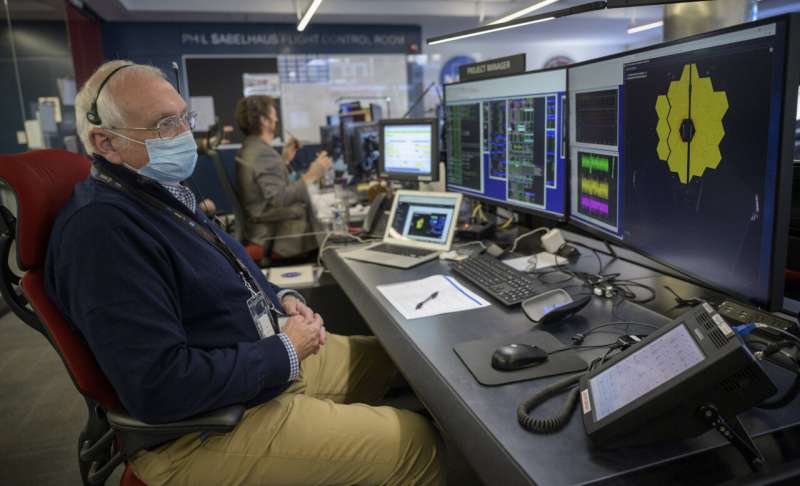
NASA’s Webb Telescope Reaches Major Milestone as Mirror Unfolds
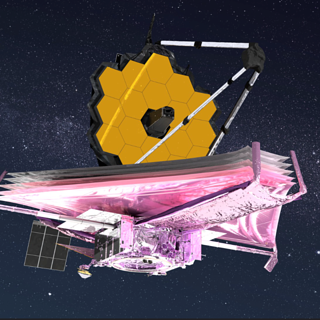 NASA’s James Webb Space Telescope team fully deployed its 21-foot, gold-coated primary mirror, successfully completing the final stage of all major spacecraft deployments to prepare for science operations.
NASA’s James Webb Space Telescope team fully deployed its 21-foot, gold-coated primary mirror, successfully completing the final stage of all major spacecraft deployments to prepare for science operations. Webb deployment complete
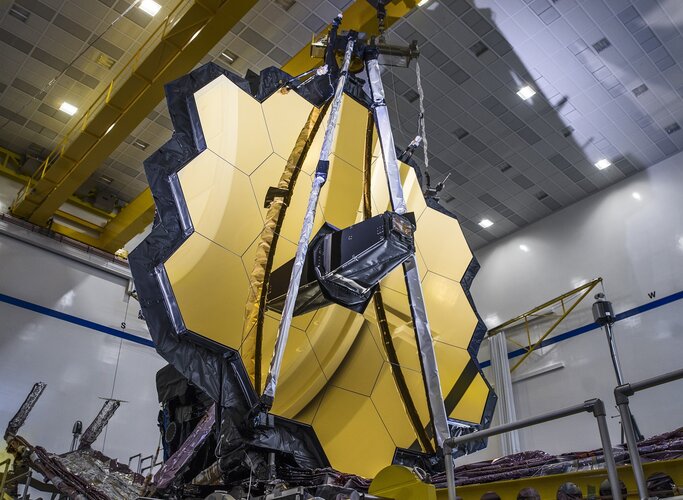
Today the James Webb Space Telescope team successfully fully deployed its iconic 6.4-metre, gold-coated primary mirror, completing the final stage of all major spacecraft deployments to prepare for science operations.
Our galaxy's most recent major collision

Webb's primary mirror deployment has begun
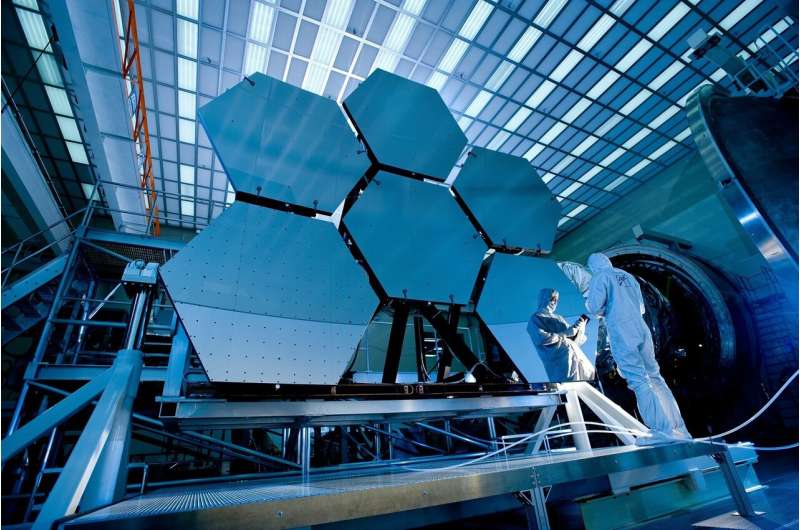
Engineers have begun the final stage of Webb's major structural deployments: the unfolding of its two primary mirror wings. These side panels, which were folded back for launch, each hold three of the observatory's 18 hexagonal, gold-coated mirror segments.
The team is beginning today with the mirror wing on the port (left) side of the observatory. Engineers must first release mechanisms that held the wing in place for launch, in order to allow the wing to deploy. The panel then rotates into position, a motor-driven process that takes about five minutes. Once the wing is extended, engineers begin a meticulous, two-hour process to securely latch it into place.
The deployment of the second primary mirror wing, planned for tomorrow, will follow the same process.
Explore further
Webb's specialized heat radiator deployed successfully

At about 8:48 a.m. EST, a specialized radiator assembly necessary for Webb's science instruments to reach their required low and stable operating temperatures deployed successfully. The Aft Deployable Instrument Radiator, or ADIR, is a large, rectangular, 4- by 8-foot panel, consisting of high-purity aluminum subpanels covered in painted honeycomb cells to create an ultra-black surface. The ADIR, which swings away from the backside of the telescope like a trap door on hinges, is connected to the instruments via flexible straps made of high-purity aluminum foil. The radiator draws heat out of the instruments and dumps it overboard to the extreme cold background of deep space.
The deployment of the ADIR—a process that released a lock to allow the panel to spring into position—took about 15 minutes.
Webb's final series of major deployments is planned to start tomorrow, Jan. 7, with the rotation into position of the first of two primary mirror wings. The second primary mirror wing—Webb's final major spacecraft deployment—is planned for Saturday, Jan. 8.
Scientist aims to ensure 'microbe-free' Mars samples
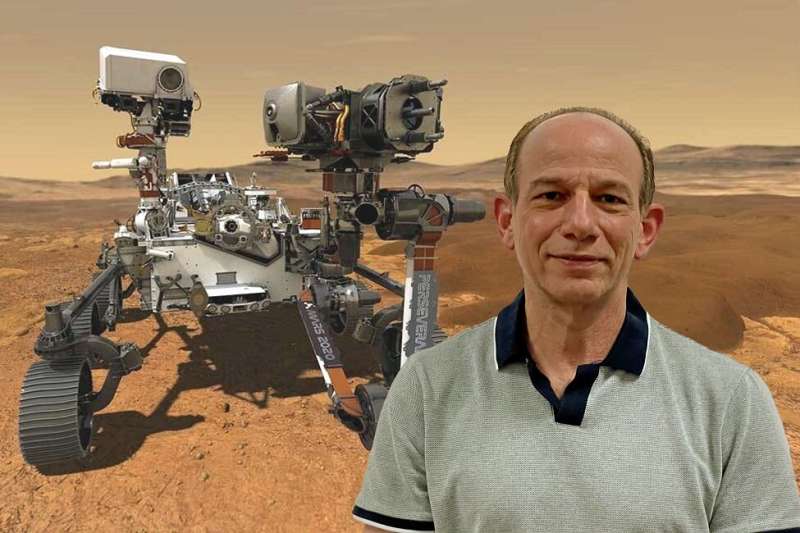
The Mars 2020 Perseverance Rover is collecting samples in search of signs of ancient microbial life, which would advance NASA's quest to explore the past habitability of Mars. The samples are set to return to Earth no earlier than 2031, as part of the Mars Sample Return campaign being planned by NASA and the European Space Agency. Before the rover went to space, NASA and its engineers worked hard to prevent Earth's microbes from contaminating Mars. Now, before the samples collected by the rover return to Earth, Florida Atlantic University is helping NASA design protocols for sterilizing Mars material and protecting our biosphere.
Gregg Fields, Ph.D., executive director of FAU's Institute for Human Health and Disease Intervention (I-HEALTH) and a professor in the Department of Chemistry and Biochemistry in the Charles E. Schmidt College of Science, is working in collaboration with a team of scientists to ensure a "microbe-free" return of Mars samples in a vessel with multiple layers of protection.
Why doesn't Webb have deployment cameras?
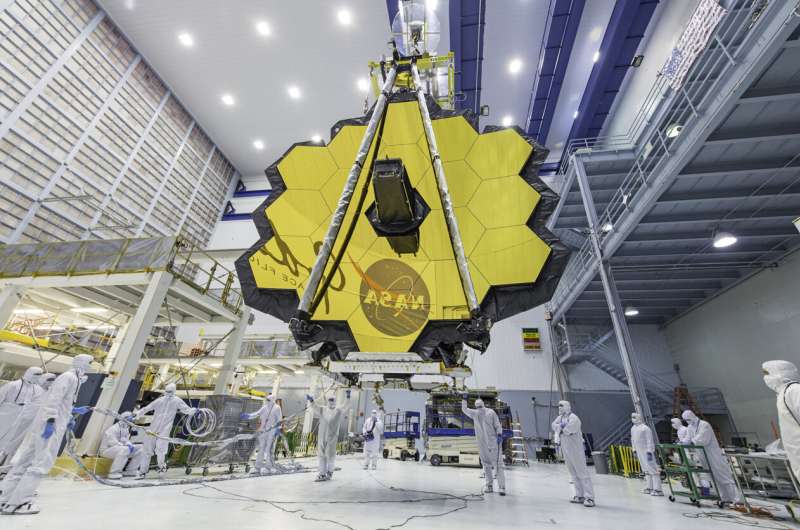
As NASA's James Webb Space Telescope makes its way out to its intended orbit, ground teams monitor its vitals using a comprehensive set of sensors located throughout the entire spacecraft. Mechanical, thermal, and electrical sensors provide a wide array of critical information on the current state and performance of Webb while it is in space.
A system of surveillance cameras to watch deployments was considered for inclusion in Webb's toolkit of diagnostics and was studied in-depth during Webb's design phase, but ultimately, this was rejected.
"Adding cameras to watch an unprecedently complicated deployment of such a precious spacecraft as Webb sounds like a no-brainer, but in Webb's case, there's much more to it than meets the eye," said Paul Geithner, deputy project manager—technical for the Webb telescope at NASA's Goddard Space Flight Center. "It's not as straightforward as adding a doorbell cam or even a rocket cam."
First of all, Webb is big, undergoes many configuration changes during deployment, and has many specific locations of import to deployment.
